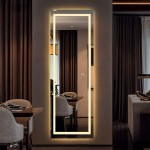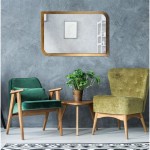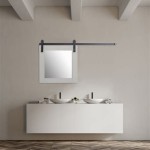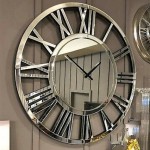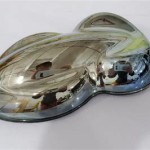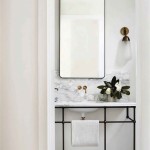Mirror Frame Moulding: A Comprehensive Guide
Mirror frame moulding significantly impacts the overall aesthetic of a mirror and its surrounding space. Choosing the right moulding requires careful consideration of various factors, including the mirror's style, the room's decor, and the desired visual effect. This article explores the essential aspects of mirror frame moulding, providing valuable insights for making informed decisions.
Material Selection
The material of the moulding dictates its durability, appearance, and cost. Several popular options exist, each with its unique characteristics:
- Wood: Offers classic elegance and can be carved into intricate designs. Different wood types, like oak, maple, and cherry, provide varying grain patterns and colors.
- Polyurethane: A lightweight and cost-effective alternative to wood, polyurethane moulding is easy to install and resistant to moisture and insects.
- Metal: Materials like aluminum and wrought iron offer a sleek, modern look. Metal moulding can be finished in various colors and textures, including brushed nickel and antique bronze.
- Plastic: A budget-friendly choice, plastic moulding is available in a wide range of colors and finishes but may lack the durability and aesthetic appeal of other materials.
- Composite: Combining wood fibers and resin, composite moulding offers the look of wood with increased resistance to moisture and warping.
Profile Styles
The profile, or cross-sectional shape, of the moulding drastically influences the frame's overall look. Several profile styles exist, each conveying a different aesthetic.:
- Flat: Simple and understated, flat moulding offers a clean, contemporary look.
- Rounded: Creates a softer, more traditional feel.
- Beveled: Features angled edges, adding a touch of sophistication.
- Ogee: An S-shaped curve that provides a classic, ornate appearance.
- Dentil: Characterized by a series of small, tooth-like blocks, offering a formal and traditional aesthetic.
Width and Proportion
The width of the moulding should be proportional to the size of the mirror. A large mirror typically benefits from a wider frame, while a smaller mirror might look overwhelmed by a bulky frame. Choosing the right width also depends on the desired visual impact:
- Narrow frames: Create a subtle, understated look, allowing the mirror to be the focal point.
- Wide frames: Make a bold statement and can add a significant decorative element to the room.
Finish Options
The finish of the moulding impacts its color, texture, and overall appearance. Several finish options exist, each offering a unique look:
- Paint: Offers a wide range of color options and can be used to create a variety of effects, from matte to high-gloss.
- Stain: Enhances the natural beauty of wood grain, providing a warm and inviting look.
- Gilding: Applying a thin layer of gold or silver leaf creates a luxurious and opulent finish.
- Distressing: Techniques like sanding, scraping, and applying glaze create an aged, antique appearance.
Installation Methods
Proper installation is crucial for the longevity and appearance of the mirror frame. Several methods exist for attaching moulding to a mirror:
- Adhesive: Specialized mirror adhesive provides a strong bond and clean finish.
- Clips: Mechanical clips offer secure attachment and allow for easy removal if necessary.
- Construction adhesive and nails: For larger or heavier frames, this method ensures secure attachment.
Cost Considerations
The cost of mirror frame moulding varies depending on several factors, including:
- Material: Wood and metal mouldings are generally more expensive than polyurethane or plastic options.
- Profile complexity: Intricate profiles often require more labor and specialized tools, increasing the cost.
- Finish: Premium finishes like gilding can add to the overall expense.
- Installation: Professional installation may incur additional costs.
Customization Options
Mirror frame moulding offers a range of customization options, allowing for the creation of unique and personalized designs:
- Carving: Intricate carvings can be added to wood mouldings for a decorative touch.
- Corner blocks: Decorative corner blocks can be added to enhance the frame's corners.
- Layering: Combining different moulding profiles can create a layered and dimensional look.
- Inlays: Incorporating materials like mother-of-pearl or metal into the moulding can add a touch of luxury.
Maintenance and Care
Proper maintenance extends the life of mirror frame moulding and preserves its appearance. Maintenance practices depend on the moulding material:
- Wood: Regular dusting and occasional polishing with wood cleaner help maintain its luster.
- Polyurethane: Cleaning with a damp cloth is typically sufficient.
- Metal: Use a metal cleaner appropriate for the specific finish to prevent tarnishing or corrosion.

Mirror Molding The Easy Upgrade To Boring Bathrooms Mirrorchic

Bathroom Mirror Framed With Crown Molding Large Mirrors Frame Makeover

Mirror Molding Framing A With Crown Mirrormate

How To Frame A Mirror Sand And Sisal

Diy Bathroom Mirror Frame With Molding The Happier Homemaker

How To Frame Out That Builder S Grade Mirror The Easy Way Pink Little Notebookpink Notebook

Moulding Mirror Frame Best Hardwood Furniture Ping

The Kids Bathroom Mirror Gets Framed House Of Hepworths

The Kids Bathroom Mirror Gets Framed House Of Hepworths

Diamond At Mouldings Mirror Frame

